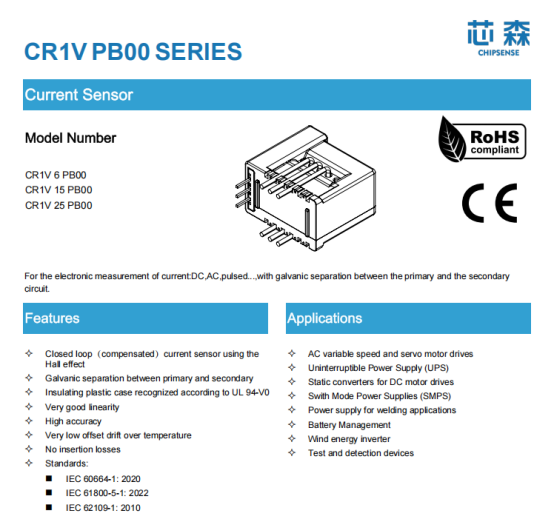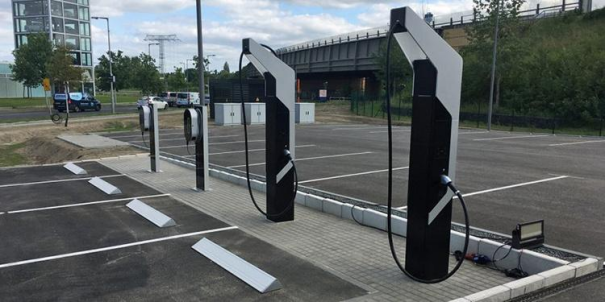
As soon as the billboard "400 kilometers in 10 minutes" was erected in the major service areas, the newly built next door pile company hung the banner "300 kilometers in 5 minutes". In this super-charged arms race, the 800V high-voltage platform seems to have become the common belief of car companies and pile companies, but when the belief landed, the first to be tortured was the current sensor: when the current jumped from "hundred amperes" to "kiloamperes", who could tell the BMS in nanoseconds that "the current is not deviated"?

"Heartbeat Monitoring" in Liquid Cooling Gun
Imagine that the moment the liquid-cooled supercharging pile starts up, instead of electrons, a tsunami of melted metal surges through the cable! A test engineer at a leading pile company once joked: "We are most afraid of hearing a “bang” sound - that means the sensor didn't catch up and the IGBT blew up." The traditional Hall sensor is like a referee who is pinched by the neck in a kiloamp scenario, blowing the whistle half a beat slower, while the 250kHz bandwidth of the CHIPSENSE AN3V series current sensor is equivalent to a "sprint coach" for each current pulse, and the tracking time of 2.5 microseconds allows the BMS to complete the shutdown 0.1 seconds before the IGBT "blows up".
A more extreme case occurred in the winter test of a car company in 2024: at -20℃, the liquid-cooled gun continued to output at 600A current, the zero drift of a sensor was like a drunk compass, and the temperature drift of CHIPSENSE AN3V current sensor was pressed to within 0.4mV. The sentence "data curve is as straight as Harbin's ice sculpture" in the test log was later written into charging pile enterprises invited tenders file.

The "invisible killer" of DC bias
There is an open secret in the industry: 30% of the "ghost faults" of overcharged piles are due to zero-point drift caused by DC bias. The technical director of a certain company complained privately: "The user saw a “jumping gun”, we stayed up late to find out that the current sensor was biased by 0.3% by the remnant magnetic tape of the busbar, and the BMS misjudged the overcurrent." However, CHIPSENSE appeared.
CHIPSENSE anti-DC bias technology sounds like metaphysics: implanting compensation windings in the gap of the silicon steel sheet is equivalent to installing a pair of "anti-noise headphones" for the sensor. In actual measurement, CHIPSENSE AN3V current sensor experienced ±3 times the rated current shock, and the magnetic offset voltage was still nailed within ±5mV - this figure is even lower than the initial error of some foreign competitors at room temperature. Even better, CHIPSENSE CR1V series current sensor has "reduced dimensionality" this ability to a 25A low-power scenario, CHIPSENSE current sensors allowing portable charging piles to enjoy the stability of "the same type of high current".

"Slang" time for engineers
"Don't tell me “typical value”, I want the guaranteed value in the worst case." - This is the original words of the purchasing director of a company at the review meeting. The answer given by CHIPSENSE is: in the full temperature range of -40℃to 105℃, the accuracy of AN3V current sensor from CHIPSENSE is guaranteed to be within ±1%; while the CHIPSENSE CR1V series current sensor even presses the offset voltage temperature drift to 0.05mV/℃(equivalent to 100℃ of temperature rise, drift does not exceed 5mV). In the words of the test engineer: "This current sensor of CHIPSENSE is more stable than the power supply in our laboratory."
When car companies rolled the overcharging race to "kilovolt kiloamps", current sensors were no longer a supporting role. From the quivering cable of the liquid-cooled gun to the cool algorithm of the BMS, there was a 0.1 microsecond decision and 0.1% accuracy in the middle - and the answer from CHIPSENSE was hidden in those test reports that engineers called "sexy curves".

CHIPSENSE is a national high-tech enterprise that focuses on the research and development, production, and application of high-end current and voltage sensors, as well as forward research on sensor chips and cutting-edge sensor technologies. CHIPSENSE is committed to providing customers with independently developed sensors, as well as diversified customized products and solutions.
“CHIPSENSE, sensing a better world!
www.chipsense.net
4F, Building C, ZHENGLING.Hi-TECH PARK(Core Space) , No. 2 Cuizhu 2nd Street, Xiangzhou District, Zhuhai, Guangdong Province, China
+86-756-8600806